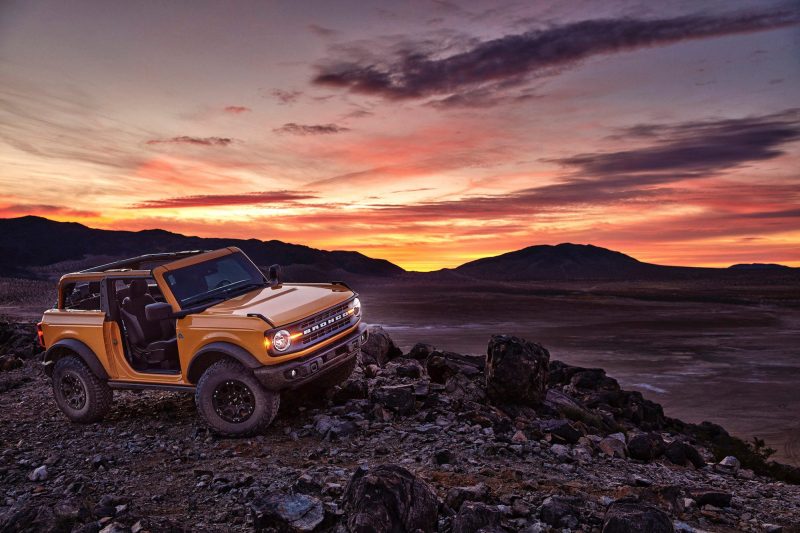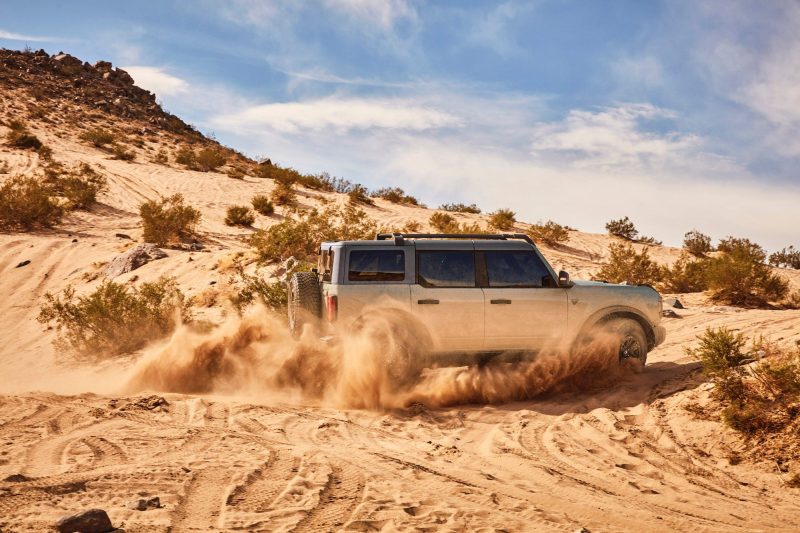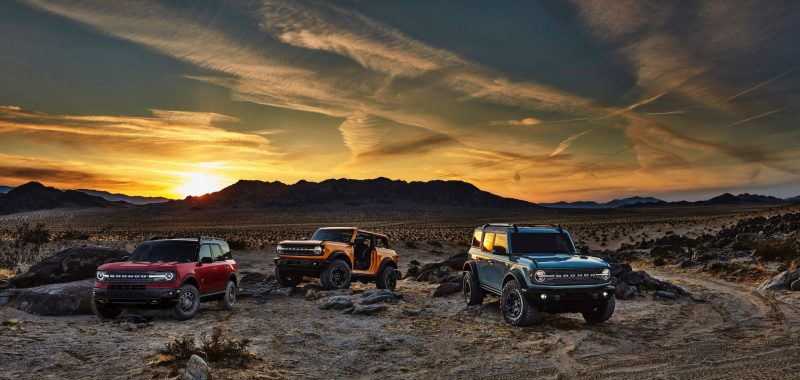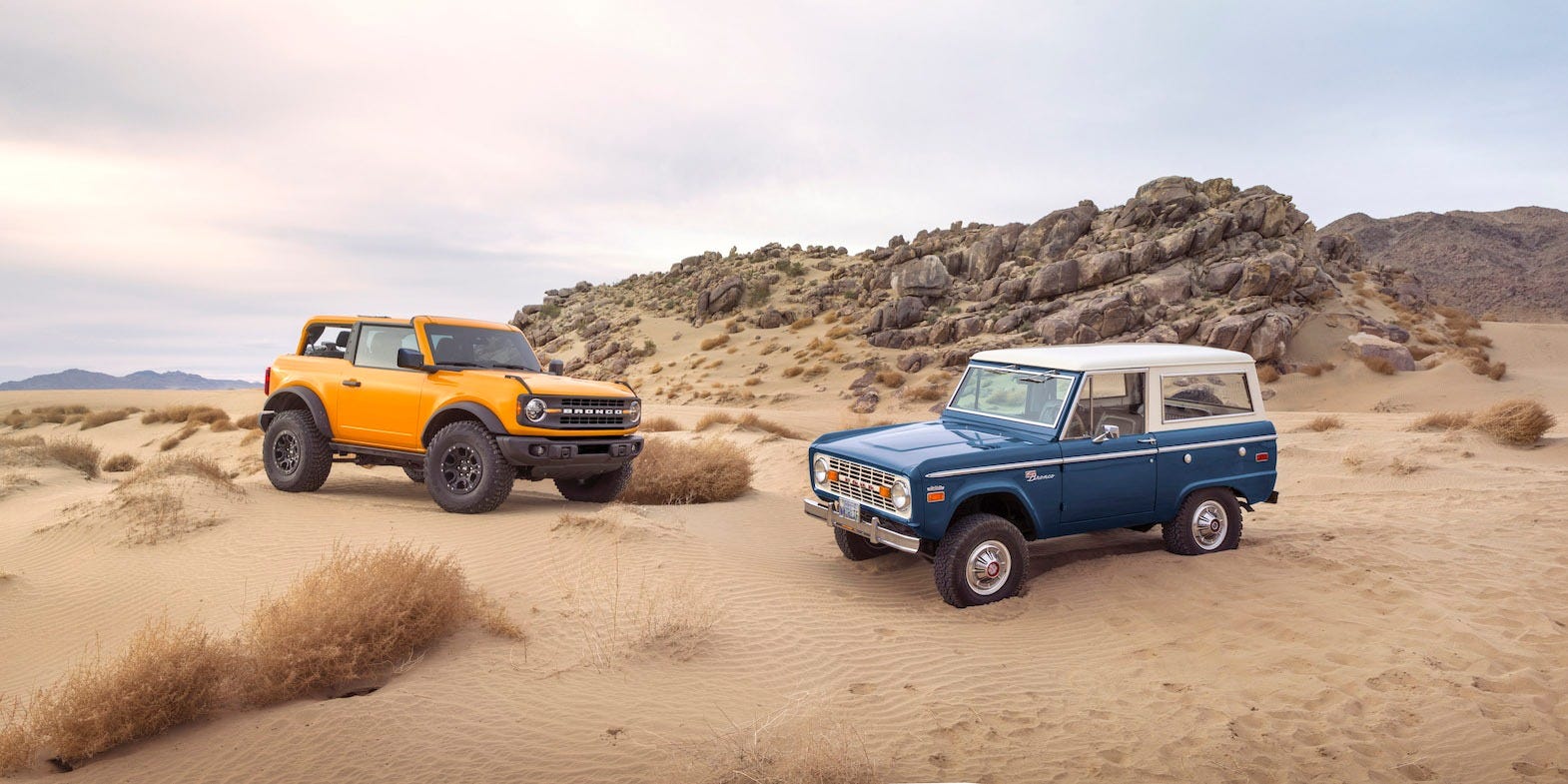- Ford just revealed the 2021 Bronco lineup, and the cars will be the first SUVs to bear the Bronco name in roughly a quarter of a century.
- The rugged Bronco was originally launched in 1965 to compete with off-road-ready utility vehicles from Jeep and International.
- Before reviving the Bronco name for the 2021 model year, Ford built five generations of the SUV.
- During its initial 31-year run from the mid-1960s to the mid-1990s, the Bronco became both iconic and notorious.
- Visit Business Insider’s homepage for more stories.
After a handful of delays and a whole lot of fanfare, the hotly-anticipated 2021 Ford Bronco has finally arrived. The new nostalgia-packed model – a trio of models, actually – is the first SUV to bear the Bronco name in more than two decades.
Before it was axed in 1996, the Bronco enjoyed a lengthy, three-plus-decade stint on the market that started in 1965. Initially developed to take on Jeep and other utility vehicles of the time, the Bronco earned a reputation for being equally capable on- and off-road over the course of its first production run. Given that, it’s no wonder that Ford decided to revive the Bronco nameplate for its new off-roading brand that – once again – takes aim at Jeep.
Enduring through five model generations, Ford’s “go-nearly-everywhere, do-nearly-everything” 4×4 SUV gained icon status, had a brush with infamy, and cemented its spot in American culture.
From the summer of ’69 to the O.J. trial, here’s a look back at the Bronco’s first 31 years on the market.
The 2021 Ford Bronco debuted on Monday night as the first new version of the SUV in more than two decades, so it's only fitting we take a look back at the model's long and storied past.

Marketed across five generations from 1966 to 1996 and lodged deep in American culture, the Ford Bronco is undeniably an automotive icon.

Making its debut in 1965 on the heels of the first Mustang, the Bronco was conceived as an off-roader to take on other simple, utilitarian 4x4s like the International Harvester Scout and Jeep CJ, which preceded the Wrangler.

Like the Jeep CJ, the Bronco traced its origins back to US military vehicles, specifically the GP and the M-151 MUTT, which Ford built during the late 1950s and early 1960s.

Touted as a “completely new line of sports-utility vehicles,” the first-gen Bronco was “equally at home on rugged mountain grades or on a run to the shopping center,” according to the model’s initial press release.

Long before the Jeep Wrangler was commonplace on American roads, the Bronco was designed as a “go-nearly-everywhere, do-nearly-everything vehicle.”

It offered standard four-wheel drive and was available in three body styles.

There was a roadster with optional doors, no top, and a fold-down windshield. It was the cheapest and most basic of the bunch.

There was also a pint-sized pickup version.

The third style was the wagon, an enclosed two-door affair with a hardtop. This standard-SUV body style would endure for the Bronco's subsequent generations.

The Bronco was initially offered with a three-speed manual paired with a six-cylinder engine rated at 105 horsepower. A beefier V8 option soon followed.

The Bronco had low performance figures by today's standards, but it was a formidable off-road racer at the time. It won the Baja 1000 rally in 1969, and Ford says it's still the only production 4x4 to do so.

The first-gen Bronco remained largely unchanged throughout its 11-year run from 1966 to 1977. But the spartan 'ute got some comfort upgrades in the 1970s, including power steering and an optional automatic gearbox.

Ford had intended to introduce a new Bronco for the 1974 model year, but the 1973-1974 oil embargo delayed those plans. In 1978, the Blue Oval finally rolled out an overhauled second-generation Bronco.

Based this time around on Ford's F-Series pickup platform, this Bronco was quite a bit larger than the original.

It was a bit better suited for highway cruising, but still had a removable hardtop and all the ruggedness of the original.

It came with two V8-engine options and sold 180,000 units in its short two-year production run, according to Ford.

Source: Ford
In 1979, Pope John Paul II rode in a Bronco-based popemobile during his visit to the US.

The third iteration of the Bronco came around in 1980 and lasted until 1986.

It was a bit lighter, smaller, and more fuel-efficient than the bulky prior model, and offered both V6 and V8 power plants.

It also was the first Bronco to come outfitted with independent front suspension rather than the traditional solid-axle setup.

The truck was built on the F-150's platform and was developed alongside the wildly popular truck.

As compact SUVs came into fashion — particularly the now-legendary Jeep Cherokee XJ and the Chevrolet S10 Blazer — Ford set its sights on developing a baby sibling for the full-size Bronco.

And in 1983, Ford rolled out the diminutive Bronco II, which was based on the smaller Ranger platform.

After 1990, the adorable Bronco II was discontinued and the Explorer was launched in its place.

The fourth-generation Bronco hit the market for the 1987 to 1991 model years.

Matching the new 1987 F-150 and the changing design language across Ford’s lineup, the fourth-gen Bronco dropped the edgy look and got a bit rounder all over.

Rear-wheel ABS and electronic fuel injection became standard for the first time during this generation.

The fifth-generation Bronco, produced from 1992 to 1996, was the last hurrah for the SUV's initial run.

It got subtle styling updates and a refreshed interior that included driver-side airbags and three-point seatbelts.

Just two years before the Bronco was set to be discontinued, the model once again found itself in the spotlight on June 17, 1994.

That infamous day, of course, is when 95 million people watched live as O.J. Simpson evaded police during a lengthy, low-speed car chase around Los Angeles.

During the two-hour ordeal, Simpson was a passenger in a white 1993 Bronco owned by his friend, Al Cowlings. Simpson had his own white Bronco to match, which was confiscated as evidence during the murder investigation into him.

Source: History
By the 1990s, it was clear that consumers favored four-door SUVs over the two-door models that used to rule. So, after 31 years on the market, the last Bronco rolled off the line in June of 1996.

That is, until now.

On Monday, Ford revealed a new lineup of Bronco models — now, Bronco is a family of SUVs rather than a single model.

There’s a two-door Bronco ...

… a four-door model …

… and a Sport version that's more compact.

Although these new models are a world away from the Broncos of the previous century, in some ways, not much has changed.

With their boxy features, off-road prowess, and removable doors, the new Broncos are — once again — built to take on Jeep.

Not to mention, the new Bronco is available in three flavors, just like the original Bronco of 55 years ago.


